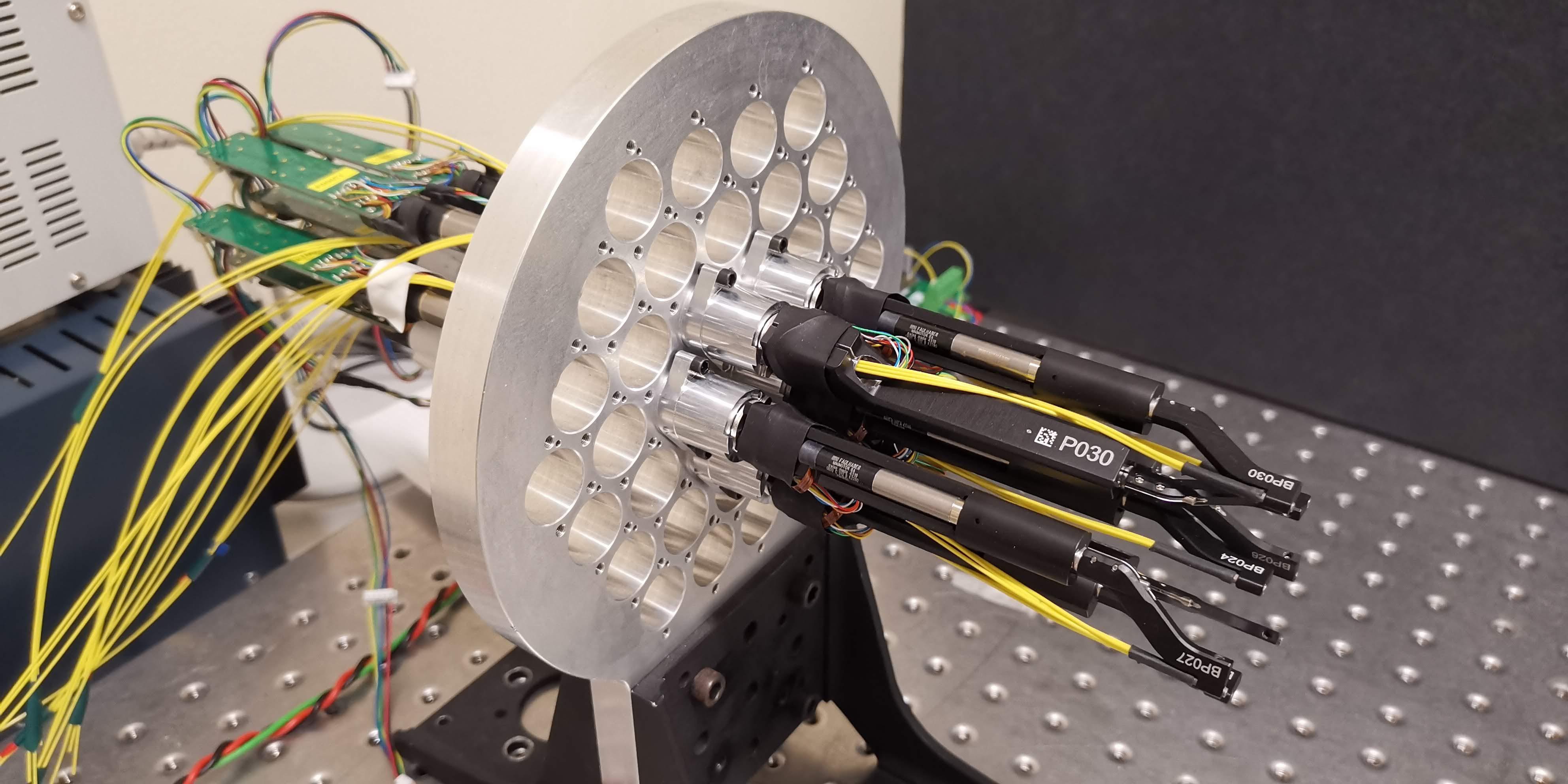One thousand newly-minted microrobots created in EPFL labs will soon be deployed at two large-scale telescopes in Chile and the United States. These high-precision instruments, capable of positioning optical fibers to within a micron, will vastly increase the quantity of astrophysics data that can be gathered - and expand our understanding of the Universe.
The Universe is expanding, but there is still a great deal that we don't know. How fast is it spreading? Why is the process speeding up, pushing various celestial objects away from each other, when the force of gravity should instead be drawing them together? What roles do dark matter and dark energy play? Questions like these - which are central to current astrophysics research - may soon find answers, thanks to a fleet of EPFL-designed microrobots.
These microrobots developed by EPFL scientists are expected to produce a surge in the amount and quality of astrophysics data we can gather, thus expanding our knowledge. It consists of a collection of 1,000 tiny robots, which were recently manufactured and delivered to Ohio State University. In time, they will be fitted to two telescopes - the Irénée du Pont telescope, at the Carnegie Institution for Science's Las Campanas Observatory in Chile, and the Sloan Foundation telescope at New Mexico's Apache Point Observatory - which are part of the international Sloan Digital Sky Survey (SDSS). EPFL is playing an active role in the SDSS (see our article from July 2020).
The robots will be used to automate the positioning of hundreds of optical fibers which serve to direct the telescopes towards objects in space. The primary targets will be stars within our own galaxy, the Milky Way. By measuring the stars' luminosity, scientists can calculate the "redshift" (i.e., the increase in the emitted light wavelength) of nearby galaxies that harbor black holes or that are part of clusters, and determine how far away they are. These measurements will help flesh out SDSS' 3D map of the Universe's stars and galaxies.

A painstaking task
Up to now, the optical fibers in the SDSS telescopes have been positioned by hand - a lengthy, painstaking task that demands extreme precision. For the telescope to be able to observe celestial objects, hundreds of fibers need to be placed in holes set in a massive aluminum plate. There is no room for error: each fiber has to be positioned to the nearest micron to ensure that the image is perfectly in focus.
Under the current method, it takes a month to select the target stars and design, manufacture and drill the plates, which are then dispatched to the observatory. Then an experienced pair of hands needs 45 minutes to correctly position the thousand fibers. What's more, on observing nights, twenty minutes are required to switch plates, during which the telescope is offline. "The Swiss robots speed up this process by orders of magnitude opening up the possibility of large-scale spectroscopic time-domain exploration", rejoice Juna Kollmeier, Director of the SDSS-V project.
The positioner robots are expected to be operational at the Sloan telescope this fall and in Chile early next year.
Doubling and tripling the number of stars observed
"In addition to huge gains in flexibility and accuracy, we also hope to substantially increase the number of objects we can observe," says Mohamed Bouri, head of EPFL's Rehabilitation and Assistive Robotics group and the scientist in charge of designing the robots and getting them up and running. "This will allow us to shorten observation times and double or triple the number of stars and galaxies we can target. We will also be able to use spectroscopy to observe elements of the variable universe, such as exploding stars," says Jean-Paul Kneib, head of EPFL's Laboratory of Astrophysics (LASTRO).

This initiative is being spearheaded by EPFL's Astrobots group, which aims to promote synergies between the fields of astrophysics and robotics. Since 2013, this cross-disciplinary group has been developing robotic systems to make astronomical observations more efficient. By late 2019, working closely with the University of Michigan and the University of Berkeley, the group had already helped build 5,000 robots for the Dark Energy Spectroscopic Instrument (DESI), which is designed to better understand dark energy.
There is little doubt that the DESI and SDSS will expand the horizons of both astronomers and astrophysicists alike, resulting - in the years to come - in a richer and more detailed map of the Universe. But this is just the beginning: EPFL scientists are already hard at work on a new generation of smaller, equally robust microrobots.
The 1,000 robots were designed and certified at EPFL and built and assembled by Swiss company Micro Precision Systems (MPS) using micromotors supplied by Faulhaber.






